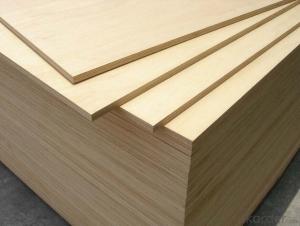Bendable plywood, a versatile and innovative material, has been gaining popularity among designers, architects, and furniture makers for its unique ability to mold into custom shapes. This article delves into the world of bendable plywood, exploring its properties, applications, and the creative potential it offers.
The Art of Flexibility
Imagine a material that can be bent, twisted, and shaped into a myriad of forms without losing its structural integrity. This is the essence of bendable plywood, a type of engineered wood that combines the natural beauty of wood with the flexibility of modern engineering. It’s not just about creating curves; it’s about pushing the boundaries of what’s possible in design.
A Brief History
The journey of bendable plywood began in the 19th century when experiments with layering and bending wood started. However, it wasn’t until the mid-20th century that the technique was perfected, allowing for the creation of complex, curved forms. This innovation opened up a new realm of possibilities in various industries, from aviation to furniture design.
How It’s Made
The process of creating bendable plywood involves careful selection of wood veneers, which are then layered and bonded together under heat and pressure. The key to its flexibility lies in the orientation of these layers, with alternating grain directions that allow the material to bend without breaking.
Designing with Bendable Plywood
Working with bendable plywood is an exercise in creativity and precision. Designers must consider the material’s limitations and strengths, such as its flexibility, durability, and resistance to warping. It’s not just about making something look good; it’s about making something functional and long-lasting.
Applications in Furniture Making
One of the most prominent uses of bendable plywood is in furniture making. From chairs to tables, its ability to create smooth, flowing lines and ergonomic shapes has made it a favorite among furniture designers. The material’s strength and flexibility allow for the creation of pieces that are both comfortable and stylish.
In Architecture and Interior Design
Bendable plywood’s applications extend beyond furniture. In architecture and interior design, it is used to create unique and eye-catching elements, such as curved walls, ceilings, and decorative panels. Its versatility makes it an ideal material for both residential and commercial spaces.
Sustainability and the Environment
As the world moves towards more sustainable practices, bendable plywood plays a crucial role. Being made from renewable wood resources, it is an environmentally friendly option that aligns with green building standards.
The Future of Bendable Plywood
With ongoing advancements in technology and material science, the future of bendable plywood looks promising. We can expect to see even more innovative uses and applications as designers continue to explore its potential.
Embracing the Curves
In conclusion, bendable plywood is more than just a material; it’s a canvas for creativity. Its ability to take on custom shapes has revolutionized the way we approach design and craftsmanship. As we embrace the curves and flexibility that bendable plywood offers, we open up a world of possibilities in creating functional, beautiful, and sustainable spaces.

